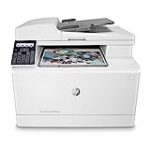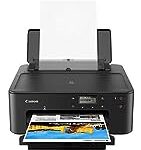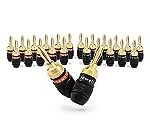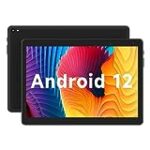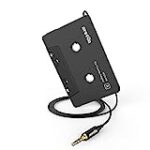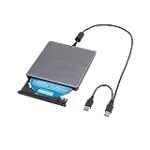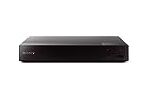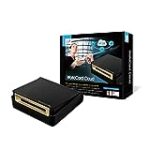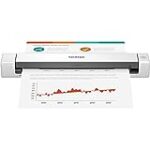🌅 Introduction
Welcome to our comprehensive Ethernet cables buying guide! Whether you’re setting up a home network or upgrading your existing one, finding the right Ethernet cable is crucial for a seamless and reliable internet connection. With a plethora of options available, it can be overwhelming to choose the perfect cable that suits your needs. Fear not, as we are here to simplify the process for you. In this guide, we will explore the different types of Ethernet cables, their features, and help you make an informed decision. So, let’s dive in and unravel the mysteries of Ethernet cables together!
🏆 Our Top 5
- 🔌【Ultra Internet speed】Cat 8 ethernet cable support bandwidth up to 2000MHz and boosts the speed of data transmission up to 40Gbps,26AWG Cables suitable Indoor/Outdoor at hyper speed without worrying about cable mess, Cat8 can reduce any signal interference to the full extent. Allow you to stream HD videos, music, surf the net, play games at Hyper Speed.
- 🔌【RJ45 Connectors & Wide Compatibility】With two shielded RJ45 connectors at both ends, the Cat8 Ethernet cable works perfectly Compatible with all the previous(cat5, cat5e, cat6, cat6a and cat7), And with IP Cam, routers, Nintendo switch, ADSL, Adapters, Modem, PS3, PS4, X-box, Patch panel, Servers, Networking Printers, Netgear, NAS, VoIP phones, laptop, Coupler, Hubs, Keystone jack, Smart TV, Imac and other device with RJ45 connectors.
- 🔌【Durable & Weatherproof & UV Resistant】Cat8 lan cable is uses 100% oxygen-free copper inside, 4 Pairs 100% 26WAG pure & thick shielded twisted pair (STP) of copper wires, Aluminium foil shield, Woven mesh shield, Shielded with high quality UV-resistant PVC jacket, the outdoor rated Cat8 Ethernet cable is anti-aging, It can withstand direct sunlight and extreme cold & humid & hot weather yet still working efficiently. Can be buried directly . Suitable for both outdoor and indoor use.
- 🔌【26AWG & Superior Performance】Comparing with other 32AWG Ethernet cable, 26AWG Cat8 is thicker, a lot faster and stable in data transferring, which is perfectly suitable for AI smart products, like Amazon Alexa, Apple Siri, Google Home, It is suitable for small or middle enterprise LANs, especially for data center switch-to-server interconnections.With sturdy high speed network cable, you will not experience a lag or stop on transferring data.
- 🔌【Customer Care 24-7】You can contact us: we're here for you and we will reply as soon as possible. We believe in our clients' satisfaction and we always do our best to help.
- High-Performance Connectivity: This Cat 6 ethernet cable is designed for superior performance, with a 24 AWG copper wire core. It provides universal connectivity as an ethernet cord for LAN network components such as PCs, servers, printers, routers, and more, ensuring reliable and fast network connections
- Advanced Cat6 Technology: Experience Cat6 performance with higher bandwidth at a Cat5e price. This network cable is future-proof, ready for 10-Gigabit Ethernet and backwards compatible with any existing Cat 5 cable network. It meets or exceeds Category 6 performance according to the TIA/EIA 568-C.2 standard
- Reliable Wired Network Solution: Known variously as a Cat6 network cable, ethernet cable Cat 6, or Cat 6 data/LAN cable, this RJ45 cable offers a more secure and reliable connection than wireless networks. It's ideal for internet connections that demand consistency and security
- Durable and Secure Design: The connectors of this ethernet cable feature gold-plated contacts and strain-relief boots for enhanced durability. Bare copper conductors not only improve cable performance but also comply with communication cable specifications
- High-Speed Data Transfer: With a high bandwidth of up to 550 MHz, this ethernet cord is perfect for demanding server applications, cloud computing, video surveillance, and streaming high-definition video online. It guarantees high-speed data transfer for all your networking needs
- 【Heavy duty & Direct Burial】: The double shielded Cat8 Ethernet cable is super-efficient in reducing EMI/RFI Interference and provide highest fidelity for long distance data transmission. With upgraded PVC, Cat8 is waterproofed & anti-corrosion and more durable & flexible for heavy duty work. Can be buried directly . Suitable for both outdoor and indoor use.
- 【26AWG & Superior Performance】: Comparing with other 32AWG Ethernet cable, 26AWG Cat8 is thicker, a lot faster and stable in data transferring, which is perfectly suitable for AI smart products, like Amazon Alexa, Apple Siri, Google Home, Cloud data Server and other smart home & office products that require high speed & high-performance network.
- 【F/FTP & Hyper Speed】: Cat8 Ethernet cable is made of 4 shielded foiled twisted pair(F/FTP) and single strand OFC wires(26AWG) which supports bandwidth up to 2000MHz and boosts the speed of data transmission up to 40Gbps. Shielded Cat8 and the improved quality in twisting of the pairs, Cat8 can reduce any signal interference to the full extent. Allow you to stream HD videos, music, surf the net, play games at Hyper Speed.
- 【RJ45 Connectors & Wide Compatibility】: With two shielded RJ45 connectors at both ends, the Cat8 Ethernet cable works perfectly with networking switch, IP Cam, routers, Nintendo switch, ADSL, Adapters, Modem, PS3, PS4, X-box, Patch panel, Servers, Networking Printers, Netgear, TP-link, NAS, VoIP phones, laptop, Coupler, Hubs, Keystone jack, Smart TV, Imac and other device with RJ45 connectors. Also compatible with Cat7/Cat5/Cat5e/Cat6/Cat6e.
- 【Weatherproof & UV Resistant】: Shielded with high quality UV-resistant PVC jacket, the outdoor rated Cat8 Ethernet cable is anti-aging. It can withstand direct sunlight and extreme cold & humid & hot weather yet still working efficiently. Premium design with great quality. 18 months support with lifetime welcoming customer service.
- High-Performance Connectivity: This Cat 6 ethernet cable is designed for superior performance, with a 24 AWG copper wire core. It provides universal connectivity as an ethernet cord for LAN network components such as PCs, servers, printers, routers, and more, ensuring reliable and fast network connections
- Advanced Cat6 Technology: Experience Cat6 performance with higher bandwidth at a Cat5e price. This network cable is future-proof, ready for 10-Gigabit Ethernet and backwards compatible with any existing Cat 5 cable network. It meets or exceeds Category 6 performance according to the TIA/EIA 568-C.2 standard
- Reliable Wired Network Solution: Known variously as a Cat6 network cable, ethernet cable Cat 6, or Cat 6 data/LAN cable, this RJ45 cable offers a more secure and reliable connection than wireless networks. It's ideal for internet connections that demand consistency and security
- Durable and Secure Design: The connectors of this ethernet cable feature gold-plated contacts and strain-relief boots for enhanced durability. Bare copper conductors not only improve cable performance but also comply with communication cable specifications
- High-Speed Data Transfer: With a high bandwidth of up to 550 MHz, this ethernet cord is perfect for demanding server applications, cloud computing, video surveillance, and streaming high-definition video online. It guarantees high-speed data transfer for all your networking needs
- High-precision, Cat 6, ANSI/TIA-568-C.2 compliant, ETL Verified, Ethernet LAN patch cable, pre-terminated with RJ45 connectors and available in a wide variety of colors for proper color coding
- Premium quality, long-lasting materials, durable design, and a Lifetime Warranty for the price of a generic cable. ETL Verified to ensure maximum reliability and compatibility
- UTP 24AWG stranded conductors for flexibility, twisted in pairs and nested in a spline to minimize crosstalk, 50 micron gold-plated contacts for high-speed data transfer and corrosion resistance
- Compatible with Ethernet 10Base-T, 100base-tx(fast Ethernet), 1000Base-T (Gigabit Ethernet), 10gbase-t (10-Gigabit Ethernet) and peer-to-peer, as well as any other devices that use 8c8p cables
- Cat6 Ethernet cable, Ethernet patch cable, RJ45 cable, multi cable, electronic cables, Gigabit cable, router cable, computer cables, Ethernet/ patch cord, Ethernet cable Pack , computer parts
🤔 How to choose?
1. Length of the Cable
When choosing an Ethernet cable, the length is an important factor to consider. The cable should be long enough to reach from your modem or router to your device without any tension or strain. It is always better to have a slightly longer cable than needed, as it allows for flexibility in positioning your devices. However, avoid excessively long cables as they can result in signal loss and slower internet speeds.
2. Cable Category
Ethernet cables come in different categories, such as Cat5, Cat5e, Cat6, and Cat7. Each category has its own specifications and capabilities. For most home networks, Cat5e cables are sufficient, as they can handle speeds up to 1 Gbps. However, if you require higher speeds or plan to future-proof your network, consider investing in Cat6 or Cat7 cables. These cables offer better shielding and can support speeds of up to 10 Gbps.
3. Cable Quality
The quality of the Ethernet cable plays a crucial role in its performance and durability. Look for cables that are made with high-quality materials and have good shielding to minimize interference. Copper conductors are preferred over CCA (Copper Clad Aluminum) conductors, as they offer better conductivity and reliability. Additionally, check for cables that are certified by reputable organizations like the Telecommunications Industry Association (TIA) or Underwriters Laboratories (UL).
4. Connector Type
Ethernet cables typically come with two types of connectors: RJ-45 and RJ-45. The RJ-45 connector is the most common and is compatible with most devices. However, if you have specific devices that require a different connector, such as an RJ-11 for telephone connections, ensure that the cable you choose has the appropriate connector.
5. Budget
While it is important to invest in a good quality Ethernet cable, it is also essential to consider your budget. Ethernet cables come in a wide range of prices, and it is possible to find a reliable cable that fits within your budget. However, be cautious of extremely cheap cables, as they may be of lower quality and not provide the desired performance.
In conclusion, when choosing an Ethernet cable, consider the length, category, quality, connector type, and budget. Remember to prioritize your specific needs and future requirements. By selecting the right cable, you can ensure a stable and high-speed internet connection for your devices.
💡 What to Look for in a ethernet cables?
1. Cable Length and Speed
When it comes to choosing the right Ethernet cable, one of the first factors to consider is the cable length and speed. The length of the cable will determine how far your network can reach, while the speed will determine how quickly data can be transmitted. It is important to choose a cable that is long enough to reach your desired destination, whether it is connecting devices in the same room or across different floors of a building. Additionally, the speed of the cable should match the speed capabilities of your devices and network infrastructure. For example, if you have a gigabit network, it is recommended to use a Cat6 or Cat6a cable, as they are designed to handle higher speeds.
2. Cable Category
The next factor to consider is the cable category. Ethernet cables are categorized based on their performance and capabilities. The most common categories are Cat5e, Cat6, and Cat6a. Cat5e cables are suitable for basic home networking needs and can handle speeds up to 1 gigabit per second. Cat6 cables are an upgrade from Cat5e and can support speeds up to 10 gigabits per second. If you require even higher speeds, Cat6a cables are designed to handle up to 10 gigabits per second over longer distances. It is important to choose a cable category that matches your network requirements to ensure optimal performance.
3. Cable Shielding
Another important consideration is the cable shielding. Shielding refers to the protective layer around the cable that helps reduce interference from external sources. Unshielded cables, also known as UTP (Unshielded Twisted Pair) cables, are the most common and cost-effective option for most home and small office networks. However, if you are in an environment with high levels of electromagnetic interference, such as near power lines or in a data center, it is recommended to use shielded cables, such as STP (Shielded Twisted Pair) or FTP (Foiled Twisted Pair) cables. These cables provide better protection against interference, ensuring a more reliable and stable network connection.
In conclusion, when purchasing an Ethernet cable, it is important to consider factors such as cable length and speed, cable category, and cable shielding. By understanding your network requirements and choosing the right cable, you can ensure a reliable and high-performance network connection. Remember to always check the specifications and compatibility of the cable with your devices and network infrastructure to make an informed decision.
🔍 How we picked?
1. Understanding the Different Types of Ethernet Cables
When it comes to buying ethernet cables, it’s important to understand the different types available in the market. Each type has its own unique features and capabilities, making it suitable for specific networking needs.
The most common types of ethernet cables include Cat5e, Cat6, and Cat7. Cat5e cables are the most basic and affordable option, suitable for basic internet usage and small networks. Cat6 cables offer higher speeds and better performance, making them ideal for gaming and streaming. Cat7 cables, on the other hand, provide even faster speeds and better shielding, making them perfect for professional use and high-demand applications.
2. Evaluating Cable Length and Bandwidth Requirements
When choosing an ethernet cable, it’s crucial to consider the length and bandwidth requirements of your network setup. The length of the cable should be long enough to reach from your router to the desired device without any signal loss. It’s always better to choose a slightly longer cable than needed to avoid any limitations in the future.
Bandwidth requirements vary depending on the type of internet connection you have and the activities you engage in. If you’re a heavy internet user who streams 4K videos or plays online games, you’ll need a cable with higher bandwidth capabilities. On the other hand, if you only use the internet for basic browsing and email, a cable with lower bandwidth will suffice.
3. Considering Cable Quality and Durability
The quality and durability of an ethernet cable are important factors to consider when making a purchase. A high-quality cable will ensure a stable and reliable connection, minimizing the risk of signal loss or interference. Look for cables that are made with high-quality materials and have good shielding to protect against external interference.
Durability is also crucial, especially if you plan on using the cable in a high-traffic area or need it to withstand frequent bending and twisting. Cables with reinforced connectors and strong outer jackets are more likely to withstand wear and tear, ensuring a longer lifespan.
In conclusion, when buying ethernet cables, it’s important to understand the different types available, evaluate your cable length and bandwidth requirements, and consider the quality and durability of the cable. By taking these factors into account, you can make an informed decision and choose the right ethernet cable that meets your networking needs.
💬 Frequently asked questions about ethernet cables
1. What is an Ethernet cable and why do I need one?
An Ethernet cable is a type of network cable used to connect devices to a local area network (LAN) or the internet. It is essential for establishing a wired connection between devices such as computers, routers, gaming consoles, and smart TVs. While Wi-Fi offers convenience, Ethernet cables provide a more stable and reliable connection, especially for tasks that require high bandwidth, such as online gaming or streaming 4K videos.
2. What are the different types of Ethernet cables available?
There are several types of Ethernet cables available, including Cat5, Cat5e, Cat6, and Cat7. Each category represents a different level of performance and capability. **Cat5** cables are the most basic and affordable option, suitable for basic internet browsing and light data transfer. **Cat5e** cables are an improved version, offering better speed and reduced interference. **Cat6** cables are designed for faster data transfer rates and are ideal for gaming and streaming. **Cat7** cables are the latest and most advanced, providing even higher speeds and better shielding against interference.
3. How do I choose the right Ethernet cable for my needs?
When choosing an Ethernet cable, consider the speed requirements of your internet connection and the devices you plan to connect. If you have a standard internet connection and only need basic browsing capabilities, a Cat5e cable should suffice. However, if you require faster speeds for gaming or streaming, consider investing in a Cat6 or Cat7 cable. Additionally, the length of the cable is crucial. Measure the distance between your devices and choose a cable that is long enough to reach without excess length, as longer cables can result in signal degradation.
4. Are all Ethernet cables the same?
No, not all Ethernet cables are the same. While they may look similar, the different categories of cables offer varying levels of performance and capabilities. It is important to choose a cable that matches your specific needs to ensure optimal performance. Using a higher category cable than necessary will not provide any additional benefits, but using a lower category cable may limit your connection speed and reliability.
5. Can I use an Ethernet cable for gaming?
Absolutely! Using an Ethernet cable for gaming is highly recommended, especially for online gaming where a stable and fast connection is crucial. Wi-Fi connections can be prone to interference and latency, resulting in lag and disrupted gameplay. By connecting your gaming console or PC directly to the router using an Ethernet cable, you can enjoy a more consistent and reliable gaming experience.
Remember, choosing the right Ethernet cable is essential for achieving the best possible connection speed and reliability. Consider your specific needs, such as internet speed requirements and device compatibility, to make an informed decision. Invest in a high-quality cable that matches your requirements, and you’ll be well on your way to enjoying a seamless and uninterrupted online experience.
Last update on 2024-07-22 / Affiliate links / Images from Amazon Product Advertising API






